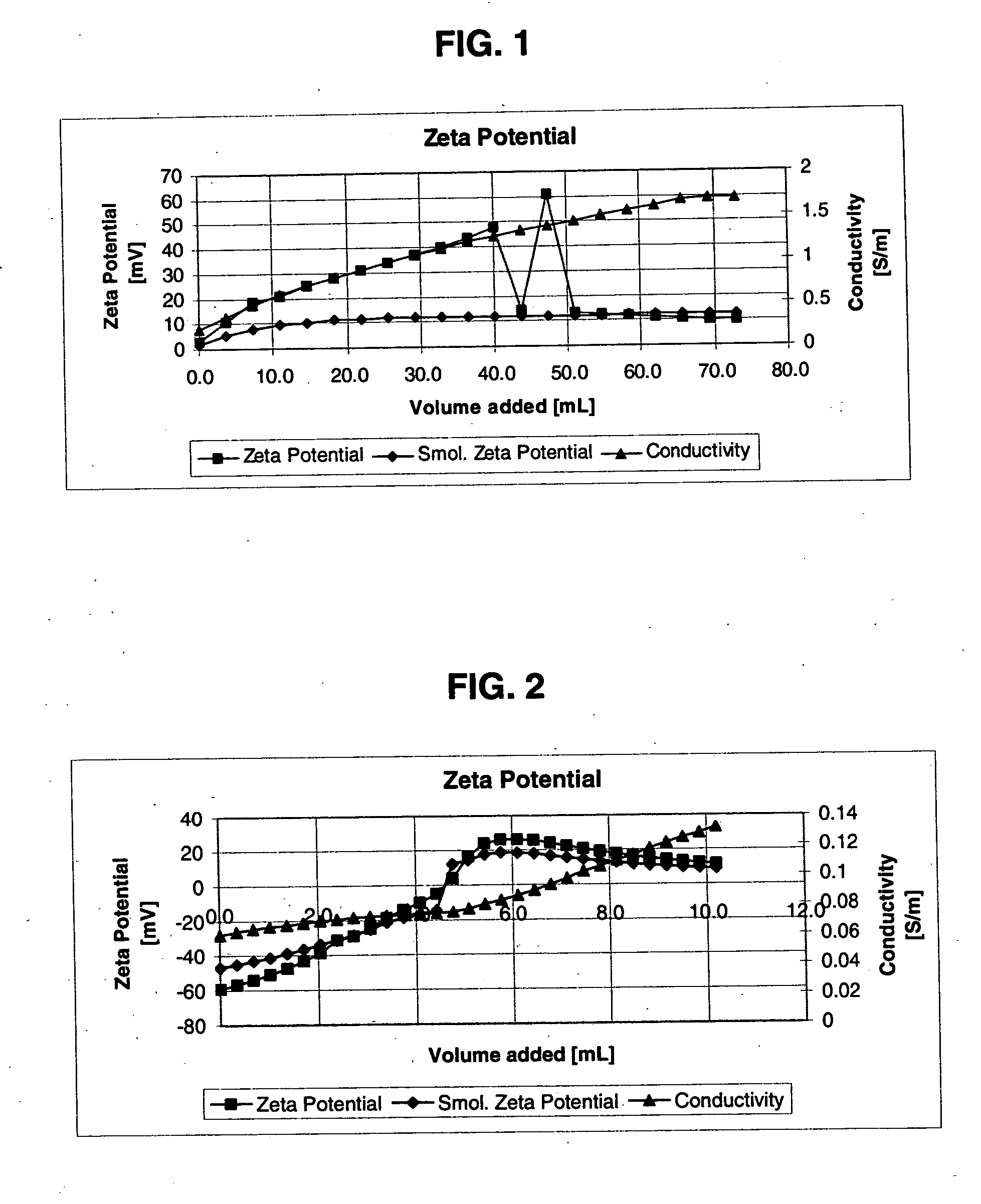Surface modified colloidal abrasives, including stable bimetallic surface coated silica sols for chemical mechanical planarization
a technology of colloidal abrasives and surface coatings, which is applied in the direction of polishing compositions, other chemical processes, lapping machines, etc., can solve the problems of reducing the reliability of integrated circuits and contaminating the surface of polished substrates
- Summary
- Abstract
- Description
- Claims
- Application Information
AI Technical Summary
Benefits of technology
Problems solved by technology
Method used
Image
Examples
example 1
[0057] Step 1: Preparation of Boron-Modified Silica Sol
[0058] This example describes the preparation of boron surface-modified colloidal silica starting with colloidal silica particles having an average particle diameter of 40 to 55 nanometers.
[0059] Approximately 1 kg of AMBERLITE IR-120 ion exchange resin (Rohm and Haas Company, Philadelphia, Pa.) was washed with 1 liter of 20% sulfuric acid solution. The mixture was stirred and the resin was allowed to settle. The aqueous layer was decanted and washed with 10 liters of deionized water. The mixture was again allowed to settle and then the aqueous layer was decanted. This procedure was repeated until the decanted water was colorless. This procedure afforded an acidic form of resin.
[0060] SYTON® HT 50 (12 kg, approximately 2.27 gallons, DuPont Air Products NanoMaterials L.L.C., Carlsbad, Calif.) was placed in a five-gallon mix tank equipped with an agitator. 2.502 kg of deionized water were added to the tank and the solution was ...
example 2
[0065] Addition of Boric Acid-Iron Nitrate Mixture to Deionized SYTON HT 50
[0066] In this procedure, deionized SYTON HT 50 at pH 2 (600 grams, supplied by DuPont Air Products NanoMaterials L.L.C.), was transferred to a 4-liter beaker. Under agitation, 400 grams of deionized water were added, followed by the addition of a mixture of boric acid (12 grams) and ferric nitrate (10.1 grams). After the addition of boric acid and ferric nitrate, an additional 278 grams of water were added. The mixture was heated between 45 and 50° C. for 2.5 hours. After heating, the mixture was cooled, the molar ratio of iron to silica was 1:2 (0.5), the molar ratio of iron to boric acid was 2:4.3 (0.47), the pH was 1.67, and the zeta potential was +16.4 millivolts. In FIG. 1, the zeta-potential graph shows how zeta-potential changes from the zero or slightly negatively charged surface to the positively charged surface.
example 3
[0067] In this example, Example 2 was repeated using a molar ratio of iron to silica of 1:4 (0.25) and a molar ratio of iron to boric acid of 1:4.3 (0.23). The pH of the surface modified was 2.11, and the zeta potential was +25.2 millivolts. This example shows that the pH and zeta potential can be controlled by changing the concentration of ferric nitrate or boric acid.
PUM
| Property | Measurement | Unit |
|---|---|---|
| Solubility (mass) | aaaaa | aaaaa |
| Abrasive | aaaaa | aaaaa |
| Selectivity | aaaaa | aaaaa |
Abstract
Description
Claims
Application Information
 Login to View More
Login to View More - R&D
- Intellectual Property
- Life Sciences
- Materials
- Tech Scout
- Unparalleled Data Quality
- Higher Quality Content
- 60% Fewer Hallucinations
Browse by: Latest US Patents, China's latest patents, Technical Efficacy Thesaurus, Application Domain, Technology Topic, Popular Technical Reports.
© 2025 PatSnap. All rights reserved.Legal|Privacy policy|Modern Slavery Act Transparency Statement|Sitemap|About US| Contact US: help@patsnap.com

